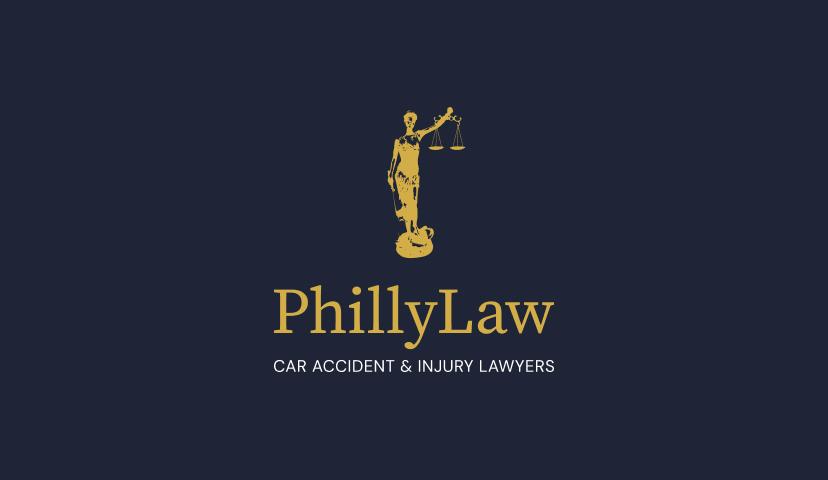Table of Contents
Fractures from Car Accidents
Broken bones are indeed among the most common injuries resulting from car accidents. The force exerted during a collision can easily break bones, whether it’s a minor fracture or a more severe compound break. The impact of a crash can cause the body to twist or turn in unnatural ways or result in direct blows to parts of the body, leading to broken bones. Such injuries can range from simple breaks, which might require minimal treatment, to complex fractures that necessitate surgical intervention and lengthy periods of rehabilitation. If you or a loved one has suffered a broken bone in a car accident due to the negligence of another driver, you may be entitled to compensation. Call the car accident attorneys at PhillyLaw today for a free consultation.
Are Broken Bones Different from Bone Fractures
No. Contrary to common misconception, “broken bone” and “bone fracture” refer to the same medical condition. When a bone is subjected to more pressure than it can absorb, it breaks or fractures, ranging from a thin crack to a complete break. This condition can occur in numerous ways during a car accident, whether through direct impact or by the body being jerked violently.
Most Common Bones Broken in Car Accidents
The human body is vulnerable to a variety of injuries during a car accident, but some bones are more likely to break than others due to their location and the dynamics of vehicle collisions. The most common broken bones in car accidents include:
Ribs
Rib fractures are particularly common in car accidents due to the impact force against the steering wheel, seat belt, or dashboard. These fractures can range from minor, causing discomfort and pain during movement and breathing, to severe, potentially puncturing lungs or damaging other internal organs. The pain from rib fractures is often sharp and localized, intensifying with deep breaths, coughing, or sudden movements.
Clavicle Fractures
Clavicle fractures are a common result of the force exerted during a car accident. This bone, running horizontally between the top of the breastbone and the shoulder blade, is prone to breaking when subjected to the intense stress of collision impacts. Such fractures can manifest in various severities, ranging from a simple crack that might heal with time and minimal treatment to complex breaks requiring surgical intervention for proper healing. Symptoms of a broken clavicle include noticeable swelling, tenderness, and a sagging shoulder on the side of the affected bone. In some cases, the broken ends of the bone may even protrude through the skin, necessitating immediate medical attention.
Arm Fractures
The arm is another commonly broken bone in a car accident. Arm fractures in car accidents often result from the direct impact during a collision or when the individual instinctively extends an arm to brace for the crash. These bone fractures can occur in any part of the arm, including the humerus (upper arm), radius, and ulna (both in the forearm). The symptoms of an arm fracture include severe pain, swelling, bruising, and an apparent deformity, like a bent arm or wrist. In some cases, the victim might be unable to move the affected limb due to intense pain or injury to the surrounding nerves and muscles.
Wrist Fractures
Wrist bone fractures are frequently broken bones in car accidents, often happening as passengers attempt to shield themselves with their hands during a crash. The bones in the wrist, particularly the radius, are susceptible to breaking under the stress of impact. Symptoms of a wrist fracture include intense pain, swelling, and difficulty in moving the wrist or hand. There may also be a visible deformity if the bones have been displaced.
Legs
Legs are common broken bones in car accidents. Similar to the arms, the legs and ankles can sustain fractures from smashing into the vehicle’s interior or from the crushing impact of the car accident.
Lower Leg Fractures
Lower leg fractures are commonly seen in car accidents due to the confined space and hard surfaces within a vehicle. The lower leg, composed of the tibia and fibula, is vulnerable to high-impact forces which can lead to various types of fractures. These may range from simple breaks, which might require minimal treatment, to compound fractures where the bone pierces the skin, necessitating immediate medical intervention.
Ankle Fractures
Ankle fractures are another common injury resulting from car accidents, particularly in scenarios where the foot is abruptly twisted or forced into an unnatural position by the crash’s impact. The ankle, a complex joint formed by meeting three bones – the tibia, fibula, and talus – is particularly vulnerable to fractures due to its role in supporting the body’s weight. These fractures can range from simple breaks affecting only one bone, which might be treated with casting and rest, to more severe fractures involving multiple bones and ligaments, requiring surgical intervention for proper healing.
Femur Fractures
The femur, or thigh bone, is the longest and strongest bone in the human body, making it somewhat less prone to breaking compared to other bones during a car accident. However, when a femur fracture does occur, it is usually the result of a high-impact collision. The force required to break the femur is substantial, indicating the severity of the accident. Femur fractures can lead to serious complications, including blood loss and damage to nearby nerves and muscles.
Hip Fractures or Pelvis Fractures
A hip or pelvic fracture in a car accident can often result from the violent force of impact, whether through direct collision with the interior of the car or as a result of a high-speed crash. The hip, a crucial joint that supports the body’s weight in both standing and sitting positions, can suffer fractures in one or more of its components: the femoral head (the ball), the acetabulum (the socket), or the upper portion of the femur including the neck and the trochanters. Symptoms of hip fractures may include severe pain in the groin or hip area, inability to bear weight on the affected leg, and the leg appearing shorter or turned outward on the side of the injured hip.
Facial and Skull Fractures
A facial fracture or a skull fracture can be amongst the most visually apparent and emotionally distressing injuries resulting from car accidents. The facial skeleton consists of fourteen bones, including those in the lower jaw (mandible), nose (nasal bones), cheeks (zygomatic bones), and around the eyes (orbital bones), all of which can be fractured on impact. Symptoms of facial fractures vary depending on the bones affected but typically include swelling, bruising, pain, and in some cases, changes in facial structure or function, such as difficulty opening the mouth or eye issues.
Skull fractures are less common but more severe, occurring when the force of impact is transferred to the head, potentially leading to life-threatening conditions. These severe skull fractures can be classified into several types, including linear (a break in the bone without movement), depressed (where part of the skull is sunken in from the trauma), and basilar (involving the base of the skull).
Diagnosing broken bones in the skull may be more challenging, as symptoms may not always be immediately apparent. Symptoms can include headaches, nausea, confusion, loss of consciousness, and cerebrospinal fluid leakage from the nose or ears.
Vertebral Fractures
Vertebral fractures occur when one or more of the spine’s vertebrae are cracked, fractured, or collapsed. These injuries are common in car accidents due to the sudden and forceful impact that can compress the spine. Vertebral fractures can range from mild compression fractures, which may cause minimal pain and require conservative treatment, to more severe burst fractures that require surgery, where the vertebra shatters and can potentially damage the spinal cord. Symptoms of vertebral fractures include sharp, stabbing back pain that may increase with movement, decreased mobility, and, in severe cases, loss of height or a noticeable hump on the back. If the spinal cord is affected, there could be numbness, tingling, muscle weakness, or even paralysis. Diagnosing vertebral fractures often requires imaging tests such as X-rays, CT scans, or MRIs to assess the damage and determine the appropriate course of treatment.
These injuries highlight the importance of safety features like airbags and seatbelts, which can mitigate the severity of accidents and reduce the risk of severe injuries in a car accident.
Hairline Fractures
Hairline bone fractures, also known as stress fractures, represent a category of bone injuries characterized by tiny cracks on the surface of the bone. These fractures are often the result of repetitive force or overuse, rather than the singular, abrupt impacts typically associated with car accidents. However, they can still occur in such events, particularly in bones that are already weakened. Symptoms of a hairline fracture may not be as immediately apparent as more severe breaks, often presenting as persistent pain that worsens with activity and diminishes with rest. Swelling and tenderness at a specific spot can also be indicators.
Due to its subtle nature, a hairline fracture can be challenging to diagnose without specialized imaging tests. Treatment generally involves rest and avoiding activities that place stress on the injured bone, allowing time for the natural healing process. In some cases, immobilization with a cast or brace may be recommended to ensure proper recovery.
Treatment for a Broken Bone
The treatment for a broken bone following a car accident varies depending on the severity and location of the injury. Initial steps often include immobilization of the affected area and bed rest, as well as using splints or casts to keep the bone stable and promote proper healing. More complex broken bones may require surgery to realign and secure the bones with plates, pins, or screws.
Pain management, through medications and sometimes ice application, is crucial in the patient’s comfort during recovery. Following the acute phase of treatment, physical therapy is typically recommended to restore the broken bones’ strength, flexibility, and mobility, ensuring the injured individual can return to their daily activities. In all cases, prompt medical assessment and follow-up care are essential to minimize complications and optimize recovery outcomes.
PhillyLaw Can Help You Recover Compensation for Fractures from Car Accidents
If you have broken bone injuries resulting from a car accident, the lawyers at PhillyLaw can help you seek compensation for your suffering. Our experienced car accident attorneys understand the severity of your injuries and the impact they can have on your life, both physically and financially. We work diligently to ensure you receive the compensation you are entitled to for medical expenses, lost wages, and pain and suffering. By gathering comprehensive evidence and employing expert testimonies, PhillyLaw strives to build a strong case in your favor, fighting for your rights every step of the way. Trust us to handle the legal intricacies of your case while you focus on your recovery from your bone fracture. Call us today for a free consultation.







